[coffee encyclopedia] # from seed to cup # the first season has nothing to do with coffee, just talk about it for a lifetime
I originally wanted to write an article called from seed to cup, but later I found that there were too many articles in the coffee. Also, a small red fruit for several years, the harvest and processing of farmers, across the ocean.
The fine processing distributed to local bakers and the careful cooking of baristas is a story in itself.
In the first season, let's talk about coffee beans, starting from the farthest part of our cup of coffee. Someone asked me where the coffee came from, and I said, from the cafe, don't you know?
Red fruit, we generally call it cherry fruit, red, gorgeous, I heard that some companies have recently launched a red cherry program to ensure that the supply of beans are picked from ripe red fruit, this is another topic
I will talk about red cherries in another article later. As the name implies, what can be called a fruit usually grows from the tree, and sure enough.
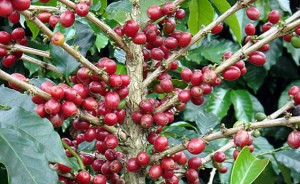
Coffee fruit
The coffee we drink is the core seed in the red fruit. That is, the part within the silver skin, remember, after we baked the coffee, we would clear out piles of silver skins in the stove of the coffee machine, which is the layer closest to the coffee beans.

Coffee fruit structure
There are many people who have eaten pork and have never seen a pig run, and there are not a few people who have drunk coffee but have not seen a coffee tree. After three years of wind and rain, such a coffee tree blossoms in vain. If you can go to the coffee farm at this time, it is a sea of white coffee flowers.
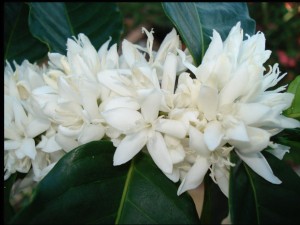
Coffee flower
In October and November every year, coffee begins to be harvested. The fruit changes from green to red, peel off the coffee fruit and take out the nuts inside, which is the raw material for us to make coffee.
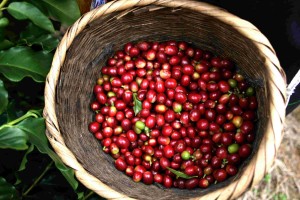
Coffee fruit
Of course, the farmers themselves will not do this, after picking to the processing plant, that is, we are familiar with the sun or water washing treatment, and after a certain degree of fermentation treatment, get a sweet and sour rich taste. If you are interested in this topic, please look forward to it. in the coming season, you will know what is tanning, what is washing, and another half-sun and half-washing honey treatment. Honey-treated coffee beans are charming in sweetness and rich in layers, er. It's a little spoiled.

Coffee seed
The processed coffee beans are also covered with a hard seed shell, at this time, each coffee bean will be faced with two life choices: either choose to be a seed, start a new cycle of life, and soak in the water for a few hours; then sprinkle it in a mud box, about a month, will appear tooth tips, most of the time, the seed shell is too hard, but also have to help remove the shell.

Coffee seed germination
Of course, most coffee beans will face another choice. That is to use a sheller to remove the seed shell, put it in a sack as coffee beans, and be sold around the world, from Brazil to China, from Africa to the United States, the journey is as painful as Obama's ancestors.
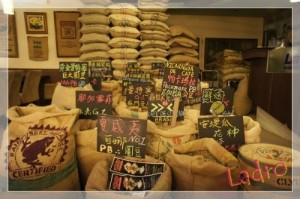
Sold coffee raw beans
After the journey, he was sent to various ovens and purgatory, where the temperature of 200 degrees for 8 to 16 minutes eventually swelled into depressed coffee beans.
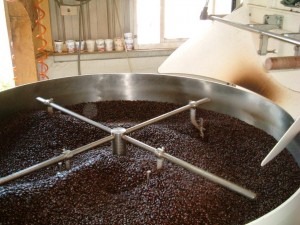
Roasted coffee beans
Then it is ground into powder, which is not enough, and finally in one of the high-temperature steam or hot water, it becomes what people call cups of coffee. Until here, is the coffee you know, and only here, is the beginning of your understanding of coffee.
In the next few days, maybe you can learn more about coffee from here-its origin, its origin, its growth, its brothers and sisters, and the way it is handled and brewed.
Important Notice :
前街咖啡 FrontStreet Coffee has moved to new addredd:
FrontStreet Coffee Address: 315,Donghua East Road,GuangZhou
Tel:020 38364473
- Prev

Pure nonsense, the coffee bean brand. Xiaobai knows 123 of the coffee world.
As mentioned in the previous article, coffee beans are not boiled. Due to witnessing too many students looking for the best coffee bean brands on the Internet, the editor continued to write a 123 / 2 article on coffee bean brands that Xiaobai understands the coffee world. This time I would like to talk about the coffee bean brand, my conclusion is that the coffee bean has no brand. Why do you say that? is there a brand of green vegetables? Potatoes have a brand.
- Next
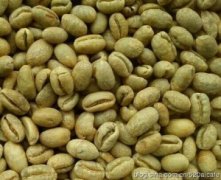
[coffee beans] Caribbean Dominica Santo Domingo coffee beans
Dominica Dominica: Santo Domingo coffee taste characteristics: fresh and elegant, full particles, excellent acidity, pleasant flavor. The Dominican Republic is located in the east of the island of Haiti in the West Indies, bordering the Republic of Haiti to the west, the Atlantic Ocean to the north and the Caribbean Sea to the south. With an area of about 49000 square kilometers and a population of 7.1 million, the Dominican Republic and the Republic of Haiti coexist in
Related
- Guji coffee producing area of Guji, Ethiopia: Humbela, Shakiso, Wulaga
- What is the most expensive variety of Qiloso in BOP multi-variety group?
- How to store the coffee beans bought home?
- Why are Yemeni coffee beans so rare now?
- Ethiopian Sidamo all Red Fruit Sun Sun Santa Vini Coffee beans
- SOE is mostly sour? What does it mean? Is it a single bean? what's the difference between it and Italian blending?
- Is Italian coffee beans suitable for making hand-brewed coffee?
- How to choose coffee beans when making cold coffee? What kind of coffee beans are suitable for making cold coffee?
- Just entered the pit to make coffee, what kind of coffee beans should be chosen?
- Can only Japan buy real Blue Mountain Coffee? What are authentic Jamaican Blue Mountain coffee beans?

